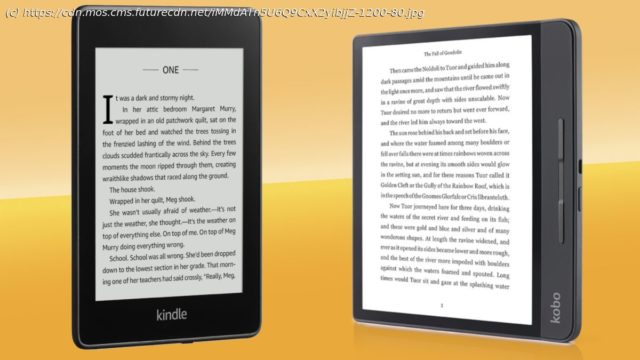Kindles and Kobos are widely available and are some of the best ebook readers you can get right now
Whether you’re heading off to college or uni, planning that next big trip when travel becomes more conducive, need a portable device for your daily commute or just staying home to keep the ongoing pandemic at bay, there’s a strong case to be made for getting an ebook reader (or ereader) instead of (or in addition to) your physical book collection. It could be as simple as the lack of space or the need to travel light. Sure, modern big-screen smartphones or tablets loaded with a Kindle or Kobo app serve the same purpose, but the way we read on a bright, electronic device is very different to how we read a physical page. And ereader screens are more like the latter in important ways. According to a 2014 report from the Stanford Center for Teaching and Learning, we’ve trained our eyes to skim and dart on screens (thank you, internet), constantly hunting for specific bits of information we’re after – a non-linear behavior the Stanford paper calls ’surface reading‘. When reading from a paper book, by contrast, our brains switch to a more concentrated form of information processing – dubbed ‚deep reading‘ – that actually helps us better absorb and comprehend what’s on the page, even if it’s a digital page that mimics the real thing. To us, that sounds like a great argument for giving ereaders their own space, away from the distractions of apps and constant notifications on our modern do-all devices. With a dedicated ereader, you can even browse for new books without leaving the house. Admittedly, ereaders are simpler devices made for the singular purpose of reading, but they have advantages that you won’t find on more versatile tablets, such as batteries that last weeks rather than hours and much clearer legibility in direct sunlight thanks to their glare-free screens. There are several brands of ereaders on the market today, but availability is spotty. For example, Barnes & Nobles‘ Nook devices are only available in the US, while Onyx Boox tablets are available in the UK and Europe. Neither are available in Australia. Two companies, though, have risen to own the ereader market globally – Amazon (with its range of Kindle ereaders) and Kobo. We’ve divided this page into two sections to highlight the best both companies have to offer, then go on to compare the two to help you make your buying decision. If money is no object and you want the most luxurious reading experience a digital ebook reader can give you, then it doesn’t get any better than the 2019 version of Amazon’s Kindle Oasis. While the older 2018 model can be found on Amazon, the new model is lighter than its predecessor, and its IPX8 waterproofing means it can easily handle an accidental dunk in the bath or the pool. The backlight can be adjusted from white to warmer yellow hues to reduce eye strain, and it can even be scheduled to become warmer at bedtime (say,9:30pm for example). There’s also the usual Kindle Oasis features we saw in the previous generation – a high-quality and large 7-inch display with E Ink technology that makes words on the page crisp and clear, and a ‚ridge‘ on one side of the sleek-looking aluminum chassis that has been designed for easy and comfortable single-hand use. The buttons to turn pages are within easy reach of the thumb even if you have small mitts, and the device can be turned upside down for use with either hand, with the pages swapping automatically to suit. WhisperSync support means you can stop reading on your Oasis and pick up reading where you left on the Kindle app, or another Kindle device, although this will require your devices to be on the same Wi-Fi network. There’s also plenty of storage space onboard, with 8GB being the starting point, but you can get a 32GB version of the Oasis if you’ve got (or planning on having) a large digital library. The base model comes with Wi-Fi enabled, but there is an LTE option as well, which allows you to download ebooks from the Kindle Store no matter where you are. It’s the ereader that comes with all the bells and whistles, if you can stomach the premium price. Read the full review: Amazon Kindle Oasis There was a time when Amazon had a Kindle called Voyage, but that has been discontinued. Instead, some of the features from the Voyage have been added to the Kindle Paperwhite, making it one of the best, affordable Kindles till date. The latest edition of the Paperwhite is thinner and lighter than the previous generation, and offers 8GB of storage on its base model – twice that on the predecessor. Like the Oasis, though, you can opt for a 32GB flavor as well, in case you’d like to store a staggering number of ebooks on the device. And, like the Oasis, there are Wi-Fi and cellular models available too. The 6-inch screen is a gorgeous HD display with 300ppi pixel density that makes the words on the page appear sharp and clear, even in bright sunlight. The built-in light can be adjusted from white to warmer hues to reduce eye strain, although you can’t schedule the light to change for nighttime reading as you can with the Oasis. Compared to the Oasis‘ sleek, premium design, the Paperwhite’s chassis is rather boring and feels plasticky in the hand, but it’s remarkably functional, as long as you don’t need to use it with a single hand. Thanks to its IPX8 waterproofing, you can safely relax in the bath or lounge by the pool with your favorite titles and not worry about it falling into the water. Battery life doesn’t seem to be as good as it was in the older version, but you’ll still get days of use out of a single charge with the current model of the Paperwhite. Read the full review: Amazon Kindle Paperwhite These are unprecedented times and everyone is budget conscious at the moment. So if you’d like an ereader that won’t burn a hole in your pocket, then Amazon’s latest basic Kindle is for you. It retails for $89.99 / £69.99 / AU$139 a pop, but you get what you pay for. It’s an entry-level, no-frills device that comes with a backlight that has no blue light filter. The 6-inch display is glare-free but it’s not the sharpest screen (an entry-level Kobo called Nia has beaten Amazon on that regard – see below for more details). That said, the screen is adequate for reading indoors, the battery will see you through a couple of weeks of reading and you’ll get up to 8GB of storage. The Kindle isn’t waterproof, so you’ll need to be careful if you’re a poolside, beach or in-the-bath reader. Despite being a basic ereader, the latest iteration of the Kindle comes with Bluetooth support, so you can connect a set of wireless headphones and link your Audible account if you’re keen on listening to audiobooks when you’re unable to read. The user interface is basic but intuitive and makes reading digital books and magazines a breeze. It’s also slim and light, making it a highly portable library for all the titles you own. Read the full review: Amazon Kindle While traditional tablet-like ereaders (like the Kindle Paperwhite mentioned above and the Kobo Nia and Clara HD below) are the most affordable ebook readers you can get, they’re uncomfortable to use single-handed. And so the asymmetric design that the Kindle Oasis pioneered is becoming more popular, with Kobo introducing the Libra H2O in late 2019 as a more affordable option to both the Amazon counterpart as well as the bigger Kobo Forma. But it’s not just the Libra’s relatively affordable price tag that makes it a compelling ereader alternative – it’s also more durable than the expensive bigger brother listed below, and it boasts an improved user interface that offers a better reading experience than what you’d get on a Kindle.






